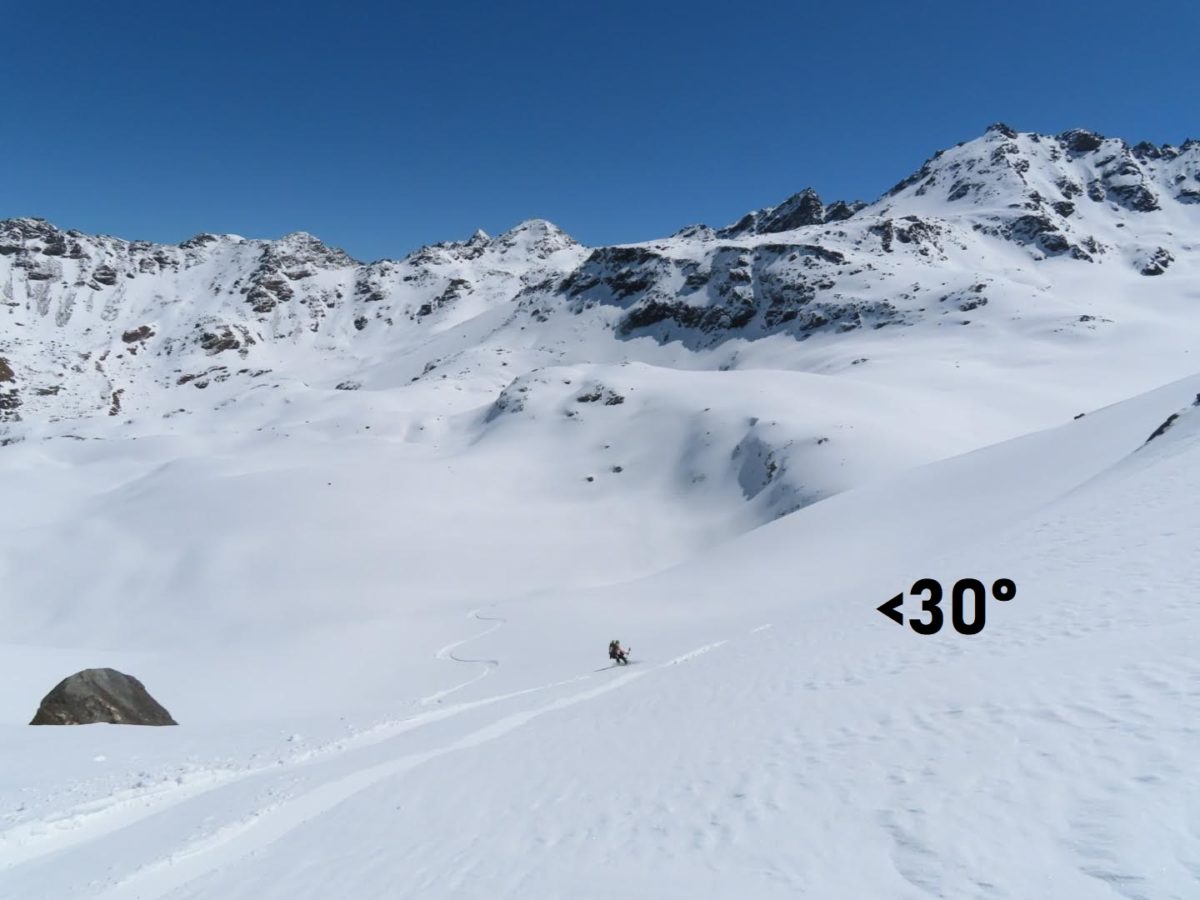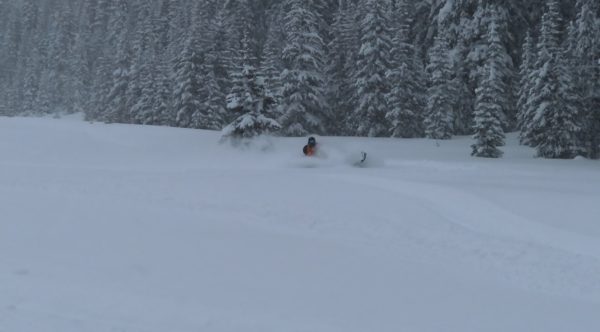Terrain that is too flat to avalanche
Avalanche practitioners describe low angle terrain as terrain that is too flat to avalanche – inclines that are generally less than about 30°. Low angle terrain provides safety from avalanches regardless of how unstable the snowpack is, but only if the terrain is not connected to steeper terrain above it. Natural avalanches or remotely triggered avalanches can easily run into low angle terrain, and in rare instances, avalanches can also release on slope angles between 25° and 30°.

This is an example of low angle terrain that is connected to steeper terrain above. Although the terrain is too flat to release an avalanche, an avalanche on the slope above ran into the flat terrain. Credit: Crested Butte Avalanche Center

This group is safely navigating low angle terrain by avoiding travel on or underneath the steeper slopes (yellow=30-35°, red >35°). Credit: Dale Atkins


